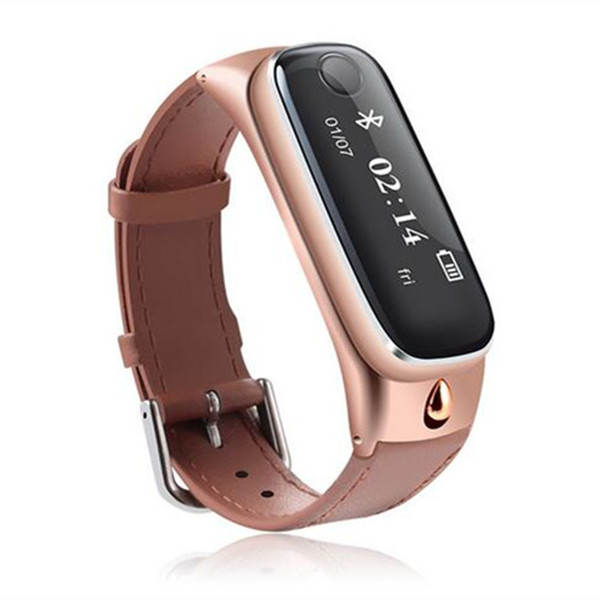And since both devices are worn on the wrist, many users do get them confused. I’ve sometimes been asked by friends and strangers what differentiates a smartwatch from a smartband since both devices almost always look alike and sometimes, perform the same function. Let’s talk about it.
Smartwatch and Smartband as wearables
If you have seen or used both devices, you’d notice that they both have some features in common. Typically, smartwatches and smartbands both tell the time, have health/fitness features (pedometer, tachymeter, sleep monitor, heart rate monitor, etc.), can be synced to smartphones, and generally worn around the wrists. The differences between both wearables most often always revolve around screen sizes, dimensions, and other complex features. I’ll explain.
What are they called?
Smartwatches are what they are: WATCHES. Hence the name Smart-Watches. Smart bands are called all variations of names and shouldn’t be compared to smartwatches. Some call them Smart Bracelets, others call them Smart Fitness trackers. And this is because smartbands are fitness-focused while smartwatches are a total package — fitness tracking, communication, fashion, and act as a phone on the wrist.
Dimension & Screen Size
Typically, smartwatches are generally bigger than smart bands. Likewise their displays. Generally, smartwatch displays are usually between 1 — 3 inches while smart bands are commonly sized at 0 — 1 inch. Additionally, the screens of smartwatches are fully touchscreen compatible such that you can control them with your fingers (just as you would with your smartphone). Navigation on smart bands, on the other hands, are usually done with a physical button. There are some touchscreen compatible smart bands though. Lastly, all smartwatches have coloured and vibrant displays while the screen you’d find on a smart band are bland and monochrome.
Features
As earlier mentioned, smart bands are fitness-focused and as such majorly sport features that help you keep your health in check. Asides telling the time, smart bands usually have pedometers, heart rate monitors, sleep monitors, and other health-inclined features. A smartwatch will typically have all the features of a smart band and more. For example, you’d find smartwatches having SIM card slots, WiFi connectivity, camera, 4G LTE, standalone apps, an app store, and even complex health features you wouldn’t find on a smart band.
Usage
Another major difference and determinant of which wearable you should purchase between smartwatch and a smart band is when, where, and how (often) you intend to use the device. A smartwatch designed very similarly like a regular watch. That’s to say smartwatches are suitable for everyday usage. Some are even better designed than regular watches and have detachable straps (stainless steel, leather, buckle-like, rubber, etc.) that you can swap for different occasion or outing. Smart fitness trackers, as the name suggestion are best worn during sport or recreational activities and as such have only rubber straps most of the time. And though some people wear their smart bands all day, they are not well designed for certain occasions. You’d agree that you should wear a smartwatch to a corporate meeting or environment, not a smart band. If you exercise more often than you attend events, parties, or meetings, then you should purchase a smart band/fitness tracker. But you should know that smartwatches fit are perfect for everyday usage.
Interactivity
This is another major differentiator of smartwatches and smart bands. Because smartwatches have a more complex operating system and features, plus the fact that they have a bigger and better screen, interactivity is much more smooth and advanced than the device than on smart bands. Smartwatches can work independently, just like a smartphone. You can text and reply your colleagues WhatsApp messages or email right on your smartphone. If you have a SIM card inserted, you can make a phone call. Some smartwatches even come with speakers, allowing you play music on your morning run while some might have and SD card slot to store music, pictures and other multimedia. Notifications are also better on smartwatches than on smart bands. Smart bands lack this complex features and interactivity.
Battery life
Before you think smartwatches have the most battery life because, obviously, there are bigger and more complex, they don’t. Yes they typically have bigger battery capacity and sizes, but due to the numerous advanced features, big colored touchscreen, and activities of the complex OS, smartwatches usually have shorter battery life. Typically, you most likely would need to recharge a smartwatch after everyday use. On the contrast, smart bands can go 2-5 days on a single charge.
Pricing
While wearable prices generally depend on the features and brand that manufactured them, smartwatches costs more than smart bands by typically a hundred dollars or more.
Conclusion
If you are the look out for something techy to wear on your wrist for everyday use, not minding how much it would cost you, then you should buy a smartwatch. On the other hand, if you’re the sporty, health and fitness-focused type, a smart band would be a worthy investment. It doesn’t cost much and you can also wear it around all day. The o my downside is that you’d be missing out on some of the juicy features of a smartwatch. In the end, it’s your call to make. But before you make that decision, ensure you take note of the factors listed above and ask yourself the right questions.









